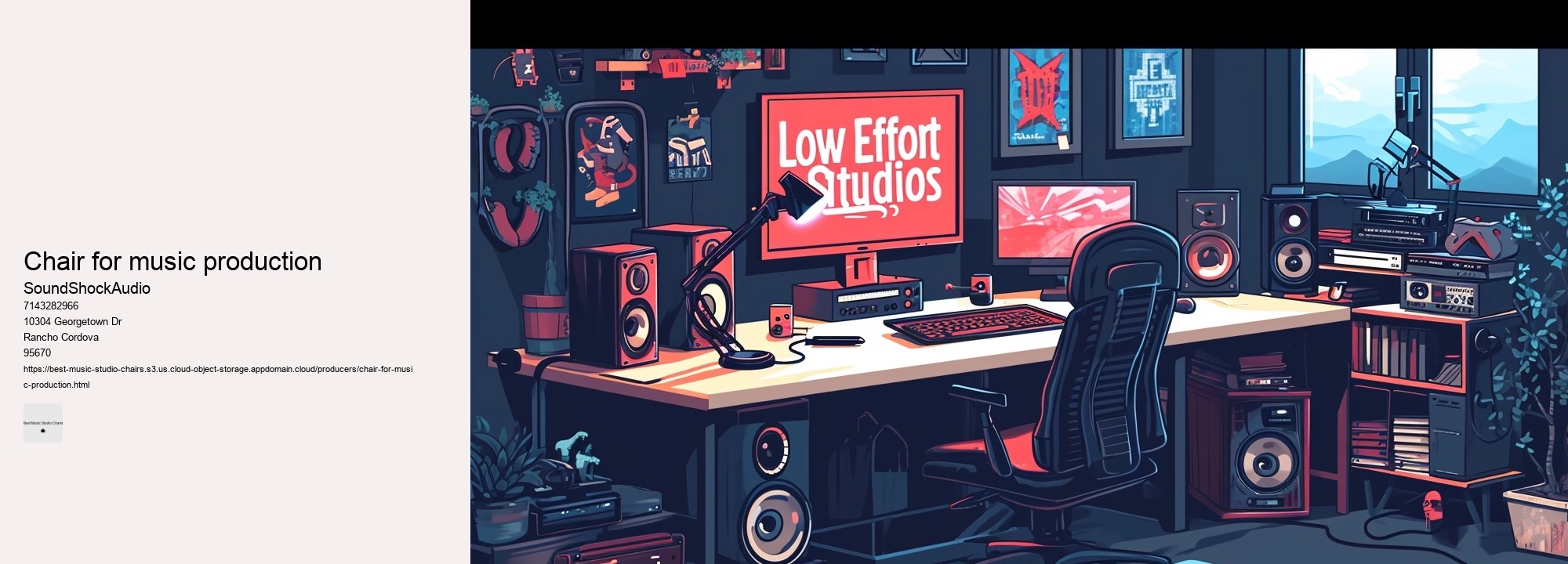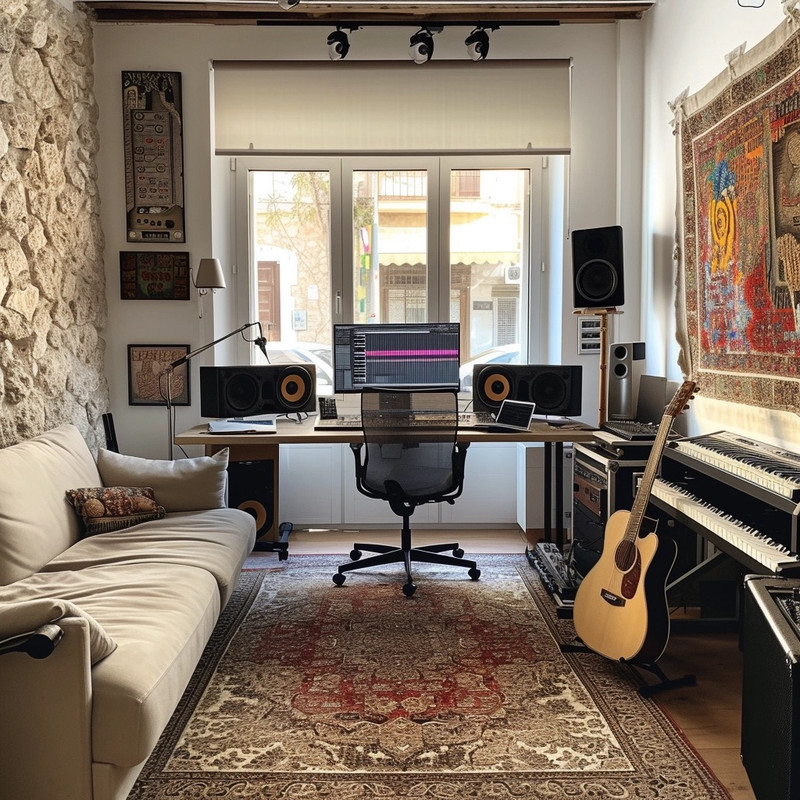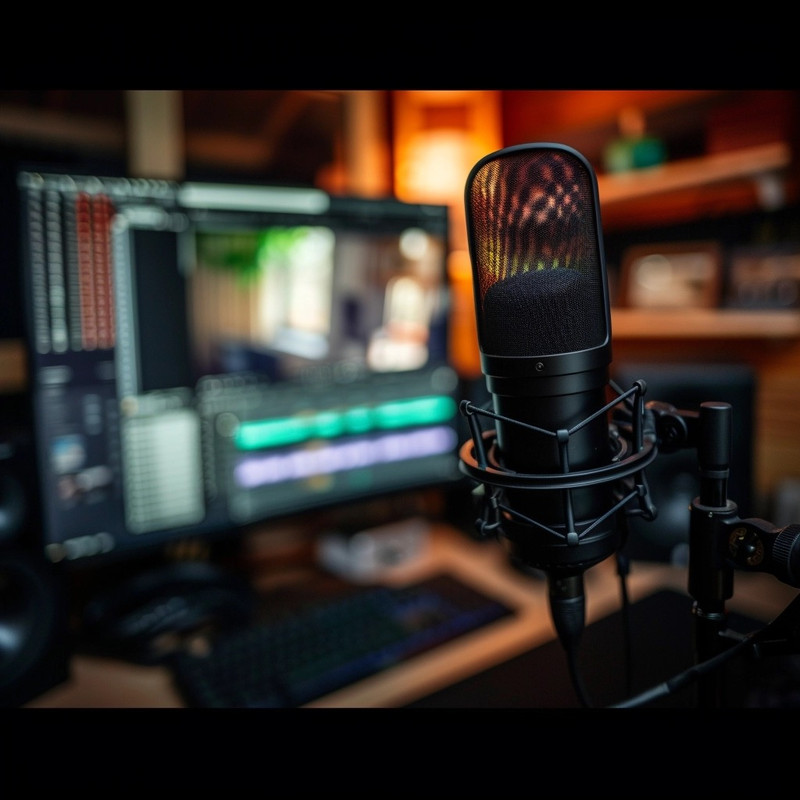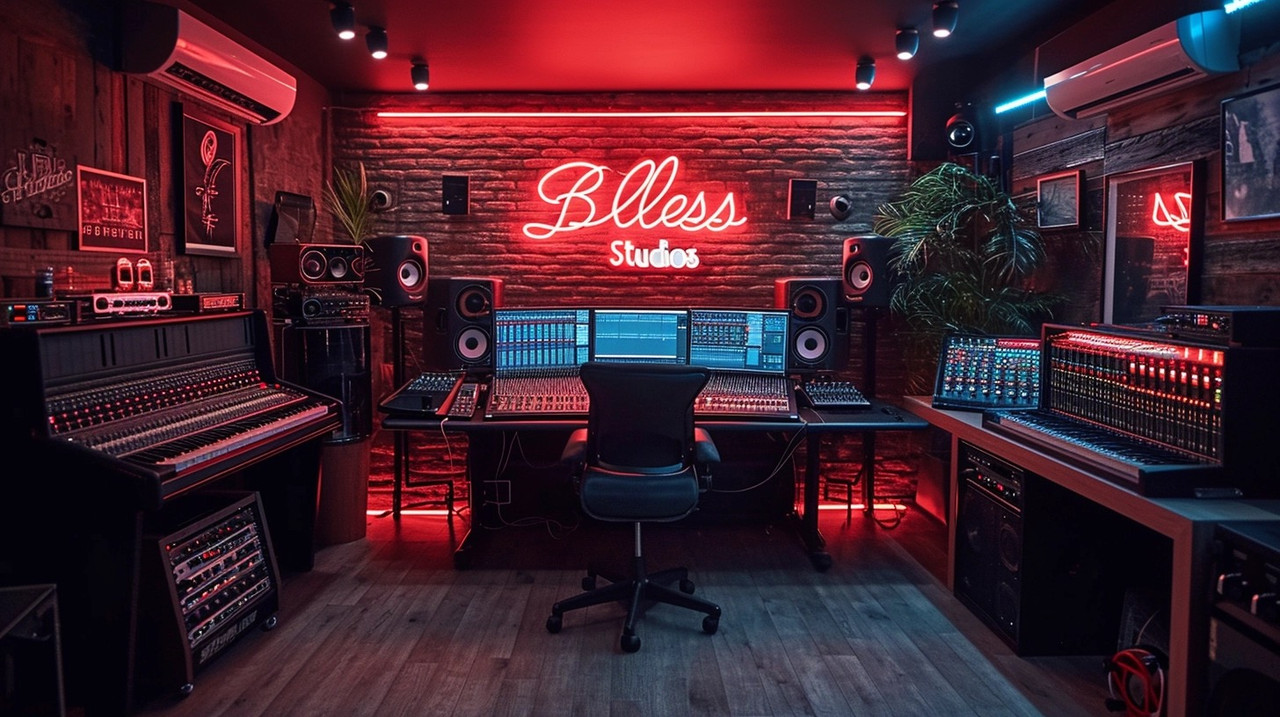

It distributes weight evenly which reduces pressure points and provides support precisely where it is needed.
Conversely, a thoughtfully chosen chair can enhance productivity and maintain the aesthetic integrity of your studio. Whether opting for industry staples like Herman Miller or Steelcase or going for more budget-friendly yet reliable options such as IKEA's offerings or gaming-oriented seats like those from Secretlab and DXRacer - there exists an array of choices designed to meet various needs while promising longevity. Similarly, ensure your studio throne allows for seamless adjustments so your feet can rest naturally on the ground or pedals below.
The design of the chair should support your body's natural posture, reducing strain on your back, neck, and limbs. Moreover, mobility is another important feature of a good studio chair.
Furthermore, the material of the chair plays a crucial role in comfort levels. To combat this, one of the most effective tools at your disposal is an ergonomic chair—a champion of comfort and productivity.
Choosing one of these chairs means investing in yourself and your craft. The backbone of any good studio chair is its lumbar support.
It will result in a composition that may not always make perfect sense or maintain logical coherence, as it deliberately introduces random and potentially unrelated elements into the text. Ergonomics and comfort aren't mere luxuries; they're necessities for maintaining focus and preventing long-term health issues. Musicians should have access to comfortable seating adjusted specifically for their posture and instrument positioning, reducing physical strain over prolonged periods.
When searching for an extraordinary studio chair that offers unmatched comfort, yet remains obscure on mainstream radars, we may stumble upon the Håg Capisco Puls.


This visual harmony creates an ambiance conducive to uninhibited expression. In selecting such a throne of thoughtfulness, one must prioritize features that may initially seem inconsequential yet play pivotal roles in sustaining creative flow. Firstly, let's address the elephant in the room - not all chairs are created equal when it comes to prolonged sitting. Another key element contributing to its comfort is its environmentally conscious construction. However, ensure the casters are tuned to your floor type; carpet demands different wheels than hardwood.
Incorporating standing desks or sit-stand workstations into one’s environment offers another layer of protection against the perils of sedentary behavior. Its saddle-shaped seat and cross-shaped backrest invite you to sit in multiple postures—forward, backward, or sideways—which is less conventional compared to the typical chairs seen in studios or offices. Thirdly, mobility within the workspace enhances efficiency and keeps creative juices flowing. Now let us muse upon aesthetics—the visual poetry of your workspace can greatly influence creative mood and output.
Beneath this marvel lies a foundation sturdy yet silent: wheels glide across studio floors as if skating on ice untouched by Zamboni's grace. Setting aside time for short breaks where you stand up, stretch out or walk around is crucial for maintaining back health over longer stretches of time. Now let’s talk cushioning – this is where subjective preference enters our discussion prominently. A key element in maintaining focus and inspiration throughout these sessions is the chair you choose to sit in. Leather
Comfort is paramount; an uncomfortable chair can lead to distraction and restlessness, breaking your focus and hindering creativity. While not as advanced as some higher-end models, its simple design coupled with decent build quality makes it suitable for less intense studio environments. Top producers often find themselves glued to their workstations for extended periods, diving deep into the intricacies of mixing and mastering. A headrest promises solace to minds burdened with chords and melodies seeking escape into audial realms.
Finally, while budget considerations may play second fiddle in this selection concerto, they cannot be ignored completely. Among these titans of seating, one finds lumbar supports singing in harmony with spines bent over mixing consoles. Initially, one must acknowledge that ergonomics transcends simple cushioning. Moreover, adjustability plays a crucial role in tailoring your sitting experience to perfection. Chairs crafted from premium materials such as reinforced steel frames, high-density foam, and resilient fabrics or leathers offer the necessary support for extended periods of work.
Comfort is subjective; what may feel like sitting on a cloud for one person could be unsupportive for another. Also essential is considering the aesthetic appeal of the chair; after all, it becomes part of your creative space's ambiance. Imagine a chair that doesn't merely exist within the studio but integrates seamlessly into the producer’s workflow. The right studio chair can significantly enhance your productivity and overall experience as you craft your musical masterpieces.
What sets it apart further is its environmentally conscious construction. It would provide incomparable support to the spine with a backrest that contours naturally to the body's curvature, ensuring those marathon mixing sessions don't take a toll on physical wellbeing. A comfortable chair contributes positively to our focus and efficiency. Adjustable in every sense, from armrest height to lumbar support tension, this chair adapts to you rather than demanding your adaptation to it.
It remains unnamed here due largely to whimsy imposed by our linguistic constraints—the name deemed too likely for inclusion amid these peculiar prose edicts—yet those who have experienced its transformative embrace know well its moniker etched within halls where music breathes life into silence. As creators and artisans of the digital world, we often overlook the profound impact that our physical workspace can have on our productivity. Selecting the perfect studio chair is akin to composing a harmonious melody; it requires attention to both comfort and style, ensuring that each element resonates with your personal preferences and workspace needs. Choosing the perfect studio chair may seem trivial, but it's an essential factor for professionals who spend countless hours refining their craft.

The material of the chair also plays into space efficiency.
Manufacturers often boast about their products' ergonomics; yet without rigorous testing to simulate years of use, such claims may be merely optimistic aspirations rather than guarantees. Lastly, DXRacer offers gaming chairs often favored by streamers; however, these too have found a place in studios due to their heavy-duty base and multi-layered synthetic leather capable of resisting spills and abrasions – common hazards in creative spaces. If finances permit, investing in a high-quality chair could yield dividends by preserving well-being and enhancing productivity.
This viscoelastic substance has revolutionized seating solutions, offering a level of comfort that was once thought to be unattainable. Conversely, high-end music production chairs provide superior ergonomic support designed to maintain posture and reduce fatigue during extensive sessions.
Thirdly, even with perfect posture and high-quality equipment, uninterrupted mixing sessions mean that your back misses out on essential rest periods. Firstly, the seat height adjustability is a crucial aspect.
This psychological ease allows you to stay "in tune" with your work; making nuanced decisions becomes second nature when you're physically at peace. In addition to ergonomic advantages, durability must not be overlooked when selecting an optimal studio chair—the constant swiveling and movement necessitate robust construction that withstands daily wear-and-tear without faltering.
Ergonomic chairs are designed to support the entire body, improve posture, and reduce discomfort during prolonged sitting by adjusting to the user's body shape, size, and movements. They often feature multiple adjustments for height, tilt, armrests, and lumbar support. Lumbar chairs, on the other hand, specifically focus on providing enhanced support to the lower back or lumbar region to prevent strain and promote spinal alignment. While all lumbar chairs are ergonomic in nature, not all ergonomic chairs may provide the same level of targeted lumbar support.
Artists often use adjustable and ergonomic chairs to support long hours of work in their studios. These chairs are designed to provide comfort and flexibility, allowing artists to adjust the height and tilt to maintain good posture while working. Drafting chairs, which are taller with a foot ring, are also popular among artists who work at drafting tables or easels.
Aeron chairs are popular due to their ergonomic design, which provides exceptional comfort and support, especially for individuals who spend long hours sitting. They feature adjustable settings for lumbar support, seat height, armrests, and tilt to accommodate various body types and sitting preferences. Additionally, their sleek, modern design and durability have made them a favorite in both office environments and home offices, contributing to their status as a symbol of professional success and design-consciousness.
An ergonomic office chair designed for long hours of use is ideal for sitting in for 8 hours. These chairs typically feature adjustable settings for height, lumbar support, armrests, and headrests to ensure comfort and support for extended periods. Brands like Herman Miller and Steelcase are renowned for producing high-quality ergonomic chairs that cater to prolonged sitting needs.